Are you searching for a high-quality telescope for planetary imaging? In this review, I’ll discuss various telescopes that excel in capturing planetary images. For instance, Meade and Celestron offer high-quality Schmidt Cassegrain Telescopes (SCTs) with apertures ranging from 8″ to an impressive 16″, allowing for high-resolution planetary imaging. Prices for these telescopes range from $1349 to over $6000. In addition to standard SCTs, Meade offers their Advanced Coma-Free (ACF) line, while Celestron has the EDGE HD line of modified SCT telescopes, both suitable for deep-sky astrophotography as well. Another excellent option for planetary imaging is the Maksutov design telescope, which provides outstanding high-contrast views of the planets. Examples include the SkyWatcher Maksutov 180 and the Celestron 700 Maksutov, both available for around $1200. Lastly, if you’re on a budget, consider a decent Classic Dobsonian mount priced between $500 and $800, along with an additional Barlow lens. This setup can provide a cost-effective solution for your planetary imaging needs!
***BLOG UPDATED to March 2024, including availability and prices of telescopes***
In this blog, I’ll first discuss some of the must-haves and nice-to-haves you should consider when comparing telescopes available on the amateur astrophotography market. After that, I’ll provide an overview of approximately 20 telescopes available on the Astro-market in 2024, which are excellent for planetary imaging from your backyard, catering to various budgets and personal preferences. If you prefer a video, then check out my old 2021 video below where I discuss high-quality telescopes for planetary imaging – it still holds relevance today :-).
Selecting a High-Quality Telescope for Planetary Imaging: Essential Features and Desired Additions
Focal length required for capturing planetary images with a telescope (magnification)
Planets, though brightly illuminated, appear minuscule in the sky. Even under optimal conditions, when they are closest to Earth, they appear approximately 60 times (!) smaller than the moon in the night sky. Therefore, to observe and capture the intricate details such as the cloud bands of Jupiter, the Cassini division in Saturn’s rings, and surface features on Mars, you require a telescope with a substantial focal length capable of magnifying the planets.
Achieving high magnification necessitates a telescope with a lengthy focal length. Focal length denotes the telescope’s capacity to enlarge celestial objects and is typically measured in millimeters. As a general guideline, I recommend opting for a telescope with a focal length of at least 2000mm or greater. This ensures that planetary surface details become visible when observing and photographing them.
Aperture required for imaging planets using a telescope (resolution)
Moreover, it’s essential to have a telescope with an adequate aperture. Aperture refers to the diameter of your telescope. For lens-based telescopes, aperture denotes the size of the lens situated at the front, while for mirror-based telescopes, it indicates the size of the primary mirror, typically located at the base.
Given the escalating costs associated with lens-based telescopes as aperture increases, opting for a mirror-based telescope is more probable for planetary observations and imaging. Aperture directly impacts the light-gathering capacity of your telescope. A larger diameter translates to enhanced light collection, leading to higher resolution and sharper surface details in planetary images.
A conservative rule of thumb suggests that the aperture of a telescope should be at least 1/10th the size of the focal length. For instance, a telescope with a 2000mm focal length would ideally require a minimum aperture of 200mm or 8 inches. While some planetary imagers have increased the f/ratio (aperture/focal length) to f/20 or even f/30, pushing beyond this threshold results in significantly lower resolution and blurry planetary images. I’d like to share these time-lapse recordings illustrating the (partial) rotation of Mars and Jupiter. I captured these sequences across multiple hours using my Edge HD 8″ Telescope, which features an aperture of 8 inches (200mm) and a focal length of 2032mm, right from my backyard in the Netherlands. Look closely, and you’ll notice Io, one of Jupiter’s Galilean Moons, in transit across the planet, casting its shadow onto the surface.
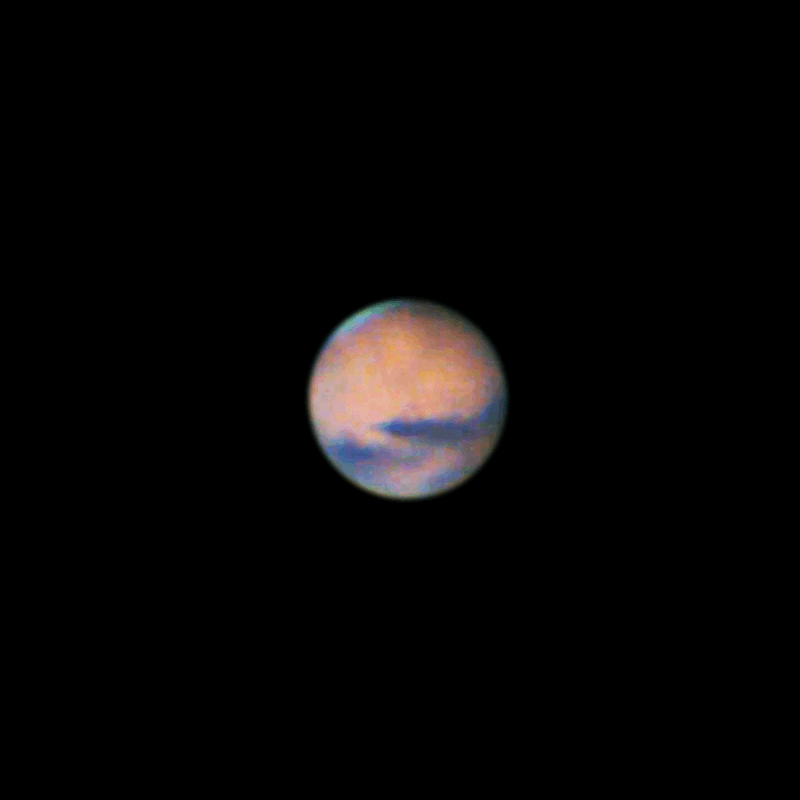
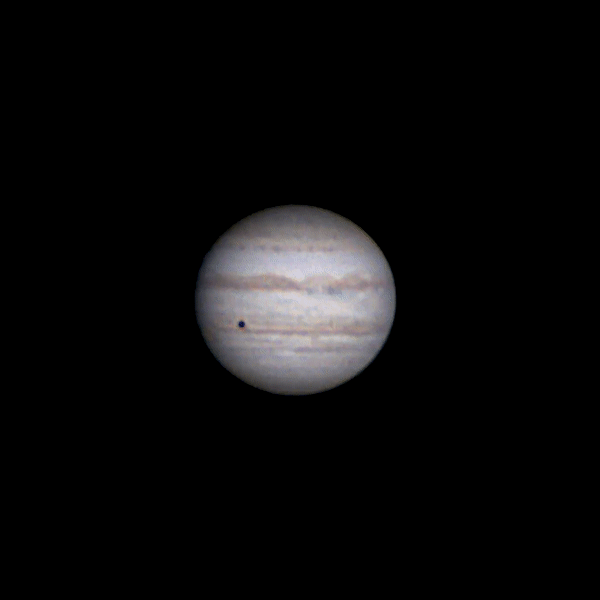
Five nice-to-haves to look for in a telescope to image the planets
- Look for a telescope with a small secondary mirror. Mirror-based telescopes have a mirror in front that blocks some light but is needed for focus and to increase the focal length. A smaller secondary mirror means the telescope can collect more light.
- Choose a telescope that’s easy to move and store. This suggestion depends on your storage space. I personally prefer telescopes that don’t take up too much room. Also, as I get older, I want a telescope that’s easy to carry and won’t strain my back when setting it up. Keep in mind that as telescopes get bigger and more powerful, they also get heavier and bulkier.
- Consider if you can also use the telescope for deep-sky astrophotography. I really enjoy deep-sky astrophotography. If you like this as well, you should consider a telescope for planetary imaging that can also be used for this purpose.
- Look for a telescope that needs little maintenance. I always look for telescopes that don’t need much upkeep. Most telescopes need collimation, but some types, like Maksutov telescopes, need less maintenance compared to others.
- Think about how much you want to spend. The price you’re willing to pay for a good quality telescope for taking pictures of planets depends on your budget.
Best telescopes for capturing planetary images currently available on the market
Instead of delving into the specifics of each telescope’s specifications, I’ll assess them in comparison to the must-haves and nice-to-haves previously mentioned. Specifically, I’ll focus on four popular types of telescopes for planetary imaging: Schmidt-Cassegrain telescopes, Modified Schmidt-Cassegrain Telescopes, Maksutov Telescopes, and Dobsonians. I’ll outline the advantages and disadvantages of each type and include affiliate links for those interested in purchasing. It’s worth noting that this blog is not sponsored, allowing me to freely discuss various telescope brands and options available on the amateur market today.
If you enjoy referencing tables, I’ve created this dynamic table, where you can review details for each of the telescopes mentioned in this blog.
Schmidt Cassegrain Telescopes
One of the top picks for observing planets with a telescope is the Schmidt-Cassegrain telescope (SCT). These telescopes are popular because they have a long focal length and a good-sized aperture, all for a fair price. Plus, SCTs, especially the smaller ones, are easy to carry around because they’re relatively compact and portable. Adjusting the mirrors for a sharp image, a process called collimation, is also straightforward with SCTs.
Celestron offers a great variety of SCTs. As I mentioned earlier, it’s a good idea to get a telescope with at least an 8-inch aperture and a focal length of 2000mm to see planets like Mars, Jupiter, and Saturn clearly. Celestron’s SCTs come in different sizes, including 8 inches, 9.25 inches, 11 inches, and 14 inches. As the numbers go up, both the aperture and focal length increase too. For example, if you compare the 9.25-inch telescope to the 8-inch XLT, the 9.25-inch one has a bigger aperture (253mm compared to 203mm) and a longer focal length (2350mm compared to 2032mm).
Of course, bigger telescopes cost more and are heavier. Celestron’s 11-inch and 14-inch SCTs are especially impressive, with large apertures (11 inches/279mm and 14 inches/356mm), long focal lengths (2800mm and 3916mm), and hefty weights (12.5kg/27.5lbs and 20.4kg/45lbs). Look at the table below for more details and click on the prices for the latest info on availability and cost.
 | 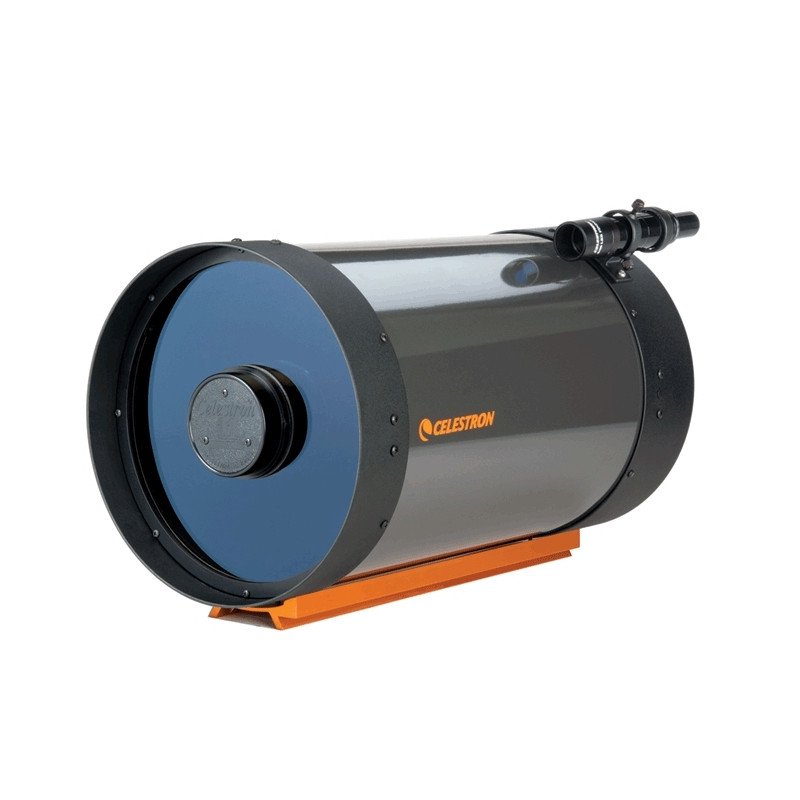 | 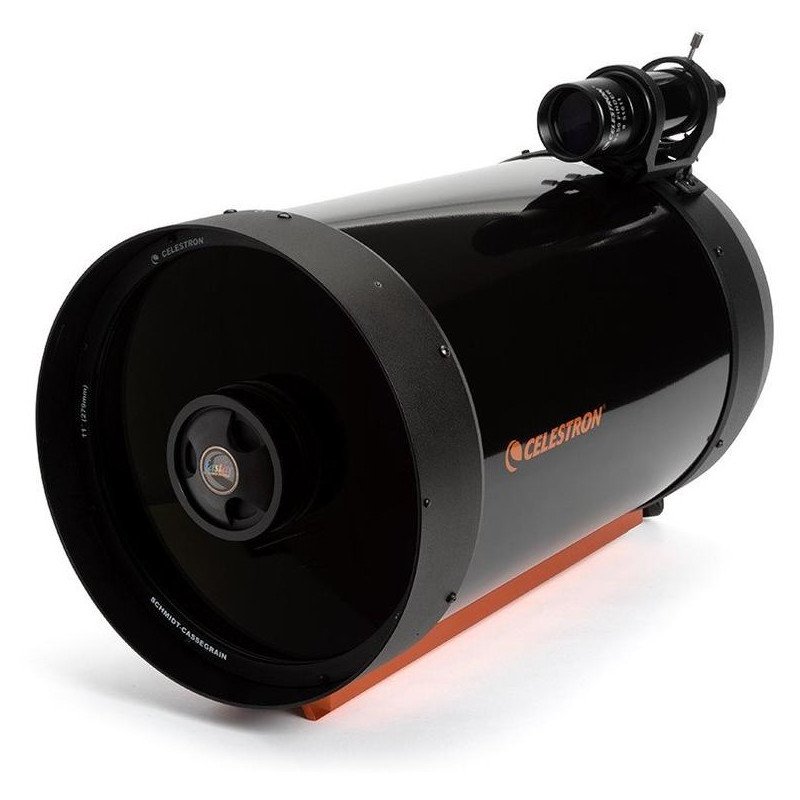 |  | |
| Type | Celestron SCT | Celestron SCT | Celestron SCT | Celestron SCT |
| Name | C8 XLT | C9.25 XLT | C11 XLT | C14 XLT |
| Price ($) Agina Astro | $1349 | $1899 | $3199 | $6499 |
| Price ($) High Point | $1299 | $1799 | $2899 | $4999 |
| Price (€) Astroshop | €1449 | €2099 | €2999 | €9445 |
| Aperture (inches) | 8″ | 9.25″ | 11″ | 14″ |
| Aperture (mm) | 203 | 235 | 279 | 356 |
| Focal Length | 2032 | 2350 | 2800 | 3916 |
| F/ratio | 10 | 10 | 10 | 11 |
| Telescope length (inch) | 17 | 22 | 24 | 31 |
| length (mm) | 432 | 559 | 610 | 787 |
| Weight (lbs) | 13 | 20 | 28 | 45 |
| Weight (kg) | 5.7 | 9.1 | 12.5 | 20.4 |
| Light gathering power | 843 | 1127 | 1593 | 2579 |
| Deep-sky? | No | No | No | No |
| Obst. sec.mirror (diameter) | 31% | 36% | 34% | 32% |
Modified Schmidt-Cassegrain Telescopes: Meade LX-200 ACF vs Celestron EDGE HD
Both Meade and Celestron offer modified versions of Schmidt Cassegrain Telescopes. “Modified” simply means that these telescopes are adjusted specifically for taking pictures of distant objects in space, like galaxies and nebulae, as well as for observing the moon and planets.
Regular Schmidt Cassegrain telescopes have some issues when it comes to taking pictures of deep-sky objects. They tend to produce images that are out of focus, with stars appearing stretched out towards the edges of the picture. To address these problems, Meade has developed the LX200 line of Advanced Coma-Free (ACF) Schmidt Cassegrain Telescopes. These telescopes come in various sizes, ranging from 8 inches to 16 inches in diameter. They are specially designed to correct for these issues, making them much more suitable for deep-sky astrophotography.
Similarly, Celestron offers modified SCTs through their Edge HD telescope line. The main advantages of Edge HD telescopes are that they do not suffer from the focusing issues seen in regular SCTs. Additionally, they are designed to correct for field curvature. The Edge HD versions also come with a hyperstar option, which allows you to convert your relatively slow F/10 telescope into a much faster F/2 ratio telescope. This enables widefield deep-sky astrophotography. The hyperstar is an optional add-on that needs to be purchased separately. This option is similar to the RASA telescope line developed by Celestron.
For more detailed information, refer to the overview table below, where you can find the most up-to-date prices and availability by clicking on the respective links.
 | 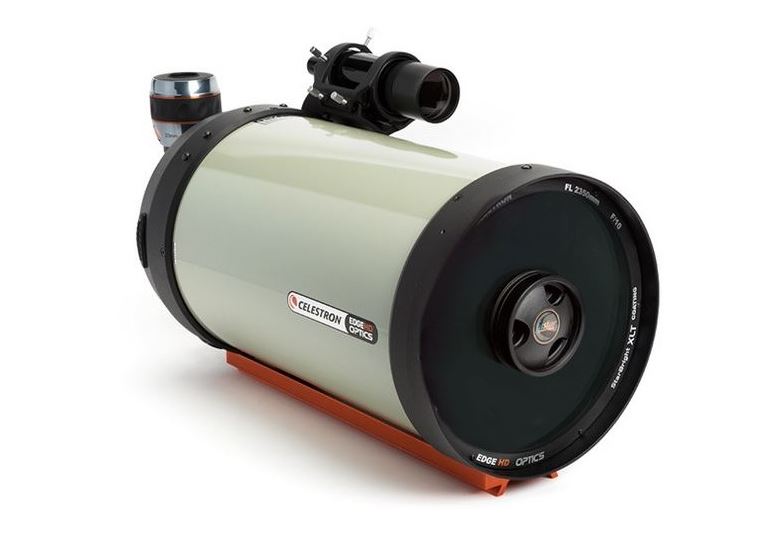 |  | 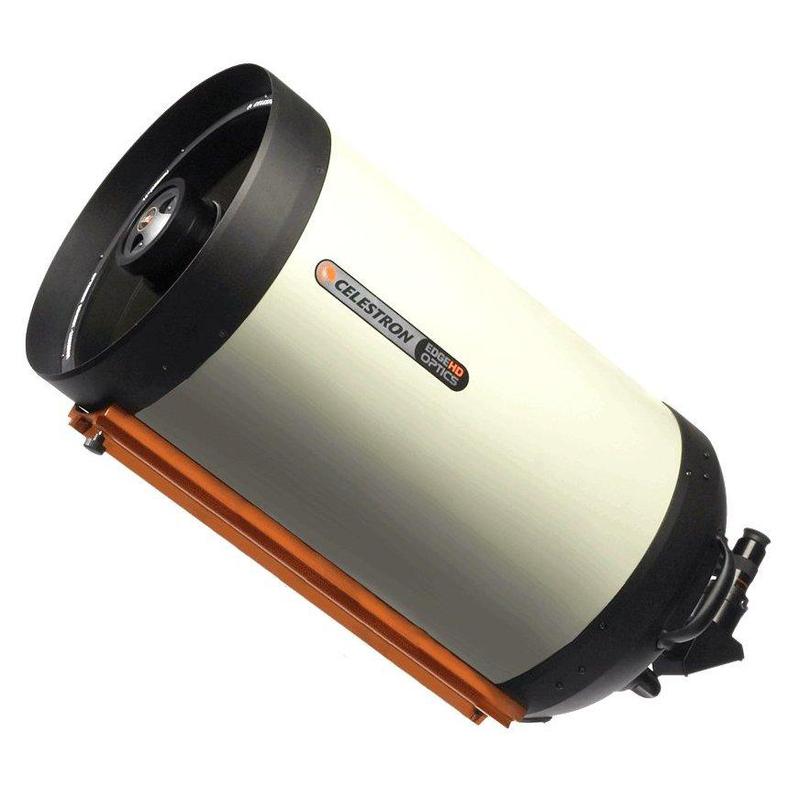 | |
| Type | Celestron Modified SCT | Celestron Modified SCT | Celestron Modified SCT | Celestron Modified SCT |
| Name | Edge HD 8″ | Edge HD 9.25″ | Edge HD 11″ | Edge HD 14″ |
| Price ($) Agena Astro | $1599 | $2999 | $4399 | $7499 |
| Price ($) High Point | $1599 | $2999 | $4399 | $7499 |
| Price (€) Astroshop | €2149 | €3299 | €4749 | €10250 |
| Aperture (inches) | 8.00 | 9.25 | 11.00 | 14.00 |
| Aperture (mm) | 203 | 235 | 279 | 356 |
| Focal Length | 2032 | 2350 | 2800 | 3916 |
| F/ratio | 10 | 10 | 10 | 11 |
| Telescope length (inch) | 17 | 22 | 24 | 31 |
| length (mm) | 432 | 559 | 610 | 787 |
| Weight (lbs) | 14 | 21 | 28 | 46 |
| Weight (kg) | 6.4 | 9.5 | 12.7 | 20.9 |
| Light gathering power | 843 | 1127 | 1593 | 2579 |
| Deep-sky? | Yes | Yes | Yes | Yes |
| Obstr.sec.mirror (diameter) | 31% | 36% | 34% | 32% |
 |  | 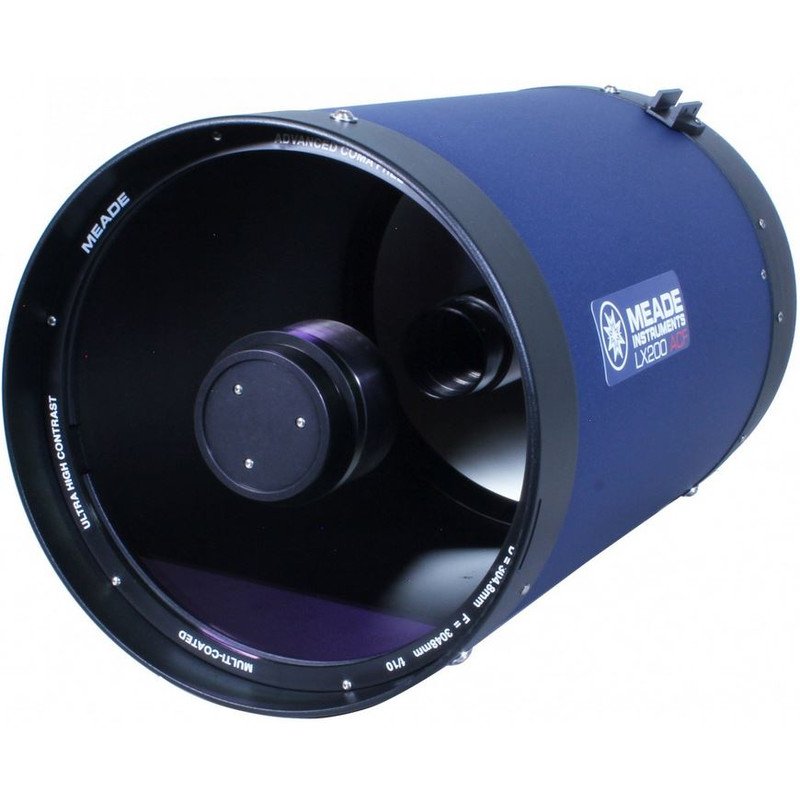 |  |  | |
| Type | Meade Modified SCT | Meade Modified SCT | Meade Modified SCT | Meade Modified SCT | Meade Modified SCT |
| Name | 8″ LX-200 ACF | 10″ LX200-ACF | 12″ LX200-ACF | 14″ LX200-ACF | 16″ LX200-ACF |
| Price ($) Agena Astro | $1749 | $3299 | $4599 | $6999 | $10999 |
| Price ($) High Point | $1749 | $2649 | $4099 | ||
| Price (€) Astroshop | €2390 | €3390 | €5390 | €8190 | €13290 |
| Aperture (inches) | 8″ | 9.75″ | 12″ | 14″ | 16″ |
| Aperture (mm) | 203 | 254 | 305 | 356 | 406 |
| Focal Length | 2032 | 2500 | 3050 | 3556 | 4064 |
| F/ratio | 10 | 10 | 10 | 10 | 10 |
| Telescope length (inch) | 18 | 23 | 26 | 32 | 35 |
| length (mm) | 460 | 584 | 660 | 813 | 876 |
| Weight (lbs) | 14 | 26 | 35 | 57 | 67 |
| Weight (kg) | 6.4 | 11.8 | 15.9 | 26.0 | 30.4 |
| Light gathering power | 840 | 1317 | 1809 | 2463 | 3216 |
| Deep-sky? | Yes | Yes | Yes | Yes | Yes |
| Obstr.sec. mirror (diameter) | 37.4% | 37.0% | 33.4% | 32.4% | 31.3% |
Upon closer examination of the Celestron Edge HD and Meade LX-200 ACF telescope lines, several noteworthy observations emerge. First, the Celestron Edge HD 8″ and the Meade LX-200 ACF 8″ telescopes exhibit striking similarities in terms of price, aperture (both 8″), focal length (both 2032mm), and weight (both approximately 6.4kg / 14lbs). However, discernible differences lie in their dimensions (432mm/17″ vs. 460mm/18″) and the obstruction of the secondary mirror (31% vs. 37.4%). Notably, the Edge HD boasts a slightly shorter stature and a smaller secondary mirror compared to the Meade LX-200 8″ ACF.
When comparing modified SCTs with larger focal lengths, the Meade LX-200 ACF 10″ offers a wider aperture (254mm vs. 235mm) and a longer focal length (2500mm vs. 2350mm) than the Celestron 9.25″ Edge HD telescope. It’s important to note that Edge HD telescopes are also corrected for field curvature and offer the hyperstar option, which Meade ACF telescopes lack. Similar differences in price, aperture, and focal length can be observed when comparing the Meade 12″ LX200-ACF to the C11 EDGE HD, or the Meade 14″ LX200-ACF to the 14″ EDGE HD.
While there is considerable debate over which modified SCT is better suited for deep-sky astrophotography alongside planetary imaging, both the Meade LX-200 ACF telescopes and the Celestron Edge HD telescopes are regarded as high-quality options for such purposes. Both telescopes would benefit from an additional focal reducer, which can be purchased separately to lower the f/ratio for deep-sky astrophotography. Regarding the Edge HD vs. Meade ACF debate, countless discussions can be found online. Ultimately, opinions may vary depending on whether one is a Meade or Edge HD owner.
Telescope Mount Alert: Important Considerations for Deep-Sky Astrophotography
While this blog doesn’t focus on mounts, it’s important to mention that you can purchase these SCTs either as standalone telescopes or with computerized go-to mounts. Celestron and Meade frequently offer options to buy ACF and Edge HD telescopes bundled with altitude-azimuth mounts. Meade provides the LX90, LX200, and LX600 mounts, while Celestron offers the Nexstar Evolution mount for 8″ and 9.25″ models, and the CPC fork mount for 11″ and 14″ SCTs. These mounts work adequately for planetary observations and imaging but are less ideal for deep-sky astrophotography.
As these mounts are not ideal for deep-sky astrophotography, because they cannot be aligned with the celestial pole, both sellers offer additional wedges for their alt-az mounts to enable deep-sky astrophotography. While technically feasible, based on personal experience, I’d advise you to invest in an advanced German equatorial mount instead if you’re serious about deep-sky astrophotography. Equatorial mounts can be aligned with the celestial pole, allowing for long exposure photography of deep sky objects beyond our solar system.
Maksutov telescopes: SkyWatcher MAK180 vs. Celestron 700
If your main interest lies in observing planets and capturing planetary images, you might want to consider opting out of Schmidt Cassegrain Telescopes (SCTs) and instead explore Maksutov telescopes. Maksutovs offer several advantages over SCTs. Firstly, they feature a smaller secondary meniscus lens compared to the secondary mirrors of SCTs. This design enhancement improves light-gathering capability and facilitates high-contrast views of the moon and planets. Additionally, Maksutov telescopes have a higher native f/ratio, providing greater magnification for planetary observations. Another benefit of Maksutov designs is that the meniscus lens is directly applied to the inside of the corrector plate, eliminating the need for collimation adjustments common in regular SCTs.
Before opting for a Maksutov telescope, there are some additional factors to consider. These telescopes require some time to cool down to match the outdoor ambient temperature, which is crucial for achieving high-quality observations and imaging. Additionally, due to their long focal length and high f/ratio, Maksutov telescopes are not particularly well-suited for deep-sky astrophotography. If your goal is exceptional lunar and planetary imaging/observations, Maksutov telescopes are certainly worth considering. However, if you also aim to delve into deep-sky astrophotography alongside planetary imaging, I would recommend exploring options such as the Celestron Edge HD or Meade LX200 ACF telescopes, as discussed previously.
Two Maksutov telescopes on the market worth considering are the SkyWatcher Maksutov 180 (MAK180) and the Celestron 700 Maksutov Cassegrain telescope. Both telescopes are similar in terms of price and design, boasting the same aperture (7″/180mm), focal length (2700mm), and telescope size (23″/572mm). For the latest prices and availability, refer to the overview table below. It’s worth noting that the Celestron MAK-CAS 700 is typically sold with the Celestron AVX – a computerized equatorial mount.
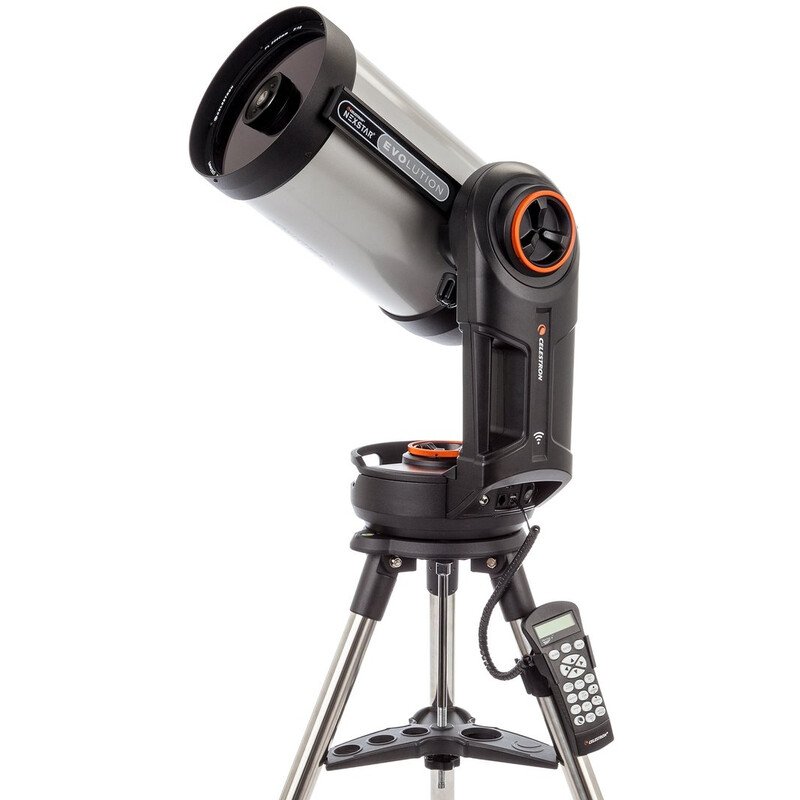 |  | |
| Type | Maksutov | Maksutov |
| Name | 700 MAK-CAS | 180mm MAK |
| Price ($) Agena Astro | $2599* | $1500 |
| Price ($) High Point | $2599* | $1500 |
| Price (€) Astroshop | €3239* | €1415 |
| Aperture (inches) | 7.00 | 7.00 |
| Aperture (mm) | 180 | 180 |
| Focal Length | 2700 | 2700 |
| F/ratio | 15 | 15 |
| Telescope length (inch) | 22 | 23 |
| length (mm) | 571 | 572 |
| Weight (lbs) | 19 | 16 |
| Weight (kg) | 8.6 | 7.2 |
| Light gathering power | 661 | 661 |
| Deep-sky? | No | No |
| Obstr.sec.mirror (diameter) | 23% | 23% |
Capturing Planets on a Budget: Dobsonian Telescopes
You might have noticed that all Schmidt-Cassegrain Telescopes (SCTs) and Maksutovs featured in this overview start at a price point of around $1,000, and this cost increases as the aperture and focal length increase. This prompts the question of whether there are more affordable alternatives available. One option worth considering, especially if you’re on a limited budget, is to opt for a Dobsonian telescope for your planetary observations and imaging needs. Dobsonian telescopes typically start at around $500 or euros for an 8″ aperture model.
Classic Dobsonian telescopes come with a manual alt-az mounting system, which means you’ll need to manually search and track the planets in the night sky using this mount. Fortunately, there are plenty of apps available, such as Stellarium, Sky Safari, and ISS Tracker, that can assist you in locating celestial objects in the night sky. It’s worth noting that Dobsonian telescopes often have a shorter focal length compared to SCTs or Maksutovs. Therefore, you may want to invest in an additional Barlow lens to increase the focal length of your telescope.
Some reputable Dobsonian telescopes include the 8″ and 10″ versions of the Skywatcher Skyliner Classic. Both versions have the same focal length (1200mm), with the 10″ version being slightly heavier than the 8″ version (14kg/31 pounds vs. 9.2kg/20 pounds). For the most up-to-date prices and availability, refer to the overview table below.
| Brand |  |  |
| Type | SkyWatcher Dobson | SkyWatcher Dobson |
| Name | Skyliner Classic 8 | Skyliner Classic 10 |
| Price ($) Agena Astro | $499 | $699 |
| Price ($) High Point | $499 | $699 |
| Price (€) Astroshop | €539 | €799 |
| Aperture (inches) | 8.00 | 10.00 |
| Aperture (mm) | 200 | 254 |
| Focal Length | 1200 | 1200 |
| F/ratio | 6 | 5 |
| Telescope length (inch) | 465 | 48 |
| length (mm) | 1181 | 1214 |
| Weight (lbs) | 20 | 31 |
| Weight (kg) | 9.2 | 14.0 |
| Light gathering power | 843 | 1.127 |
| Deep-sky? | No | No |
| Obstr.sec.mirror (diameter) | 25% | 25% |
In conclusion
Don’t hesitate to explore the planets even if you don’t have what’s traditionally considered the “right” telescope. I kicked off my planetary imaging session using a small refractor, the Celestron 102SLT, which has a 660mm focal length. Despite the planets appearing quite small in my field of view, I was still astonished by some of the views I captured, especially of Jupiter and Venus.
However, for higher-quality planetary views, I strongly recommend telescopes with adequate aperture (at least 8″) and focal length (at least 2000mm). Meade and Celestron offer top-notch SCTs, ranging from 8″ to an impressive 16″ aperture, accompanied by focal lengths exceeding 2000mm. Depending on your budget and physical capabilities, you can opt for a lighter, lower aperture version or a heavier, higher aperture one.
Furthermore, Meade provides Advanced Coma-Free (ACF) telescopes, while Celestron offers EDGE HD telescopes, both suitable for deep-sky astrophotography in addition to planetary observations. Although these models come at a higher price point compared to regular Schmidt-Cassegrain telescopes, their versatility makes them a worthwhile investment for enthusiasts looking to explore both planetary and deep-sky objects.
For those with aspirations in deep-sky astrophotography, I strongly recommend investing in a reliable German equatorial mount capable of accurately tracking celestial objects. However, if your focus is solely on planetary observations and imaging, consider the SkyWatcher MAK 180 or the Celestron 700 Maksutov. These telescopes excel at delivering high-contrast views of planets and require less maintenance (collimation) compared to SCTs.
Finally, if you’re working within a budget, a decent Classic Dobsonian mount paired with a Barlow lens is a viable option. While manual tracking is necessary, utilizing apps like Stellarium, SkySafari, and ISS Detector can assist in locating and observing the planets.
Wishing you clear skies and happy stargazing!
Wido.
Hi, excellent info and review, thanks. My comment is that Ritchey-Chrétien telescopes, D=200 mm or more, could be perhaps another possible choice for planet imaging, while also offering the opportunity for coma-free astrophotography. Honestly, I have no direct experience of any kind with RCs (my gear: C8, N6, TriAPO/80mm), but from what I have read, RCs performance for planet imaging could be decent at least, perhaps without being excellent due to the relatively larger secondary mirror obstruction as compared to SCTs, Newts, and Maks. Cheers.
I do have experience with RCs. They’re interesting scopes but the collimation procedure is more difficult compared to other designs.